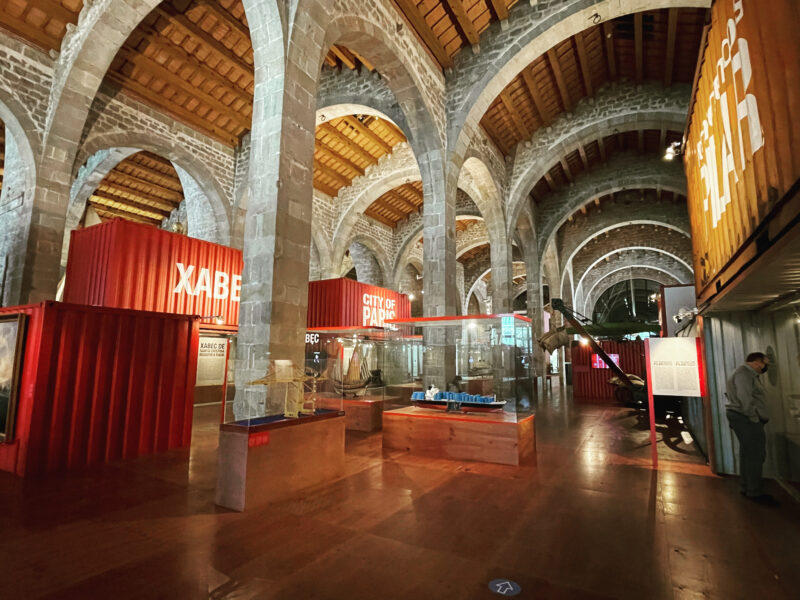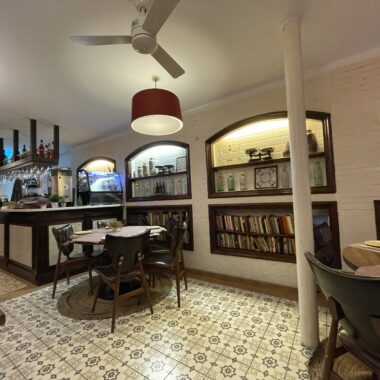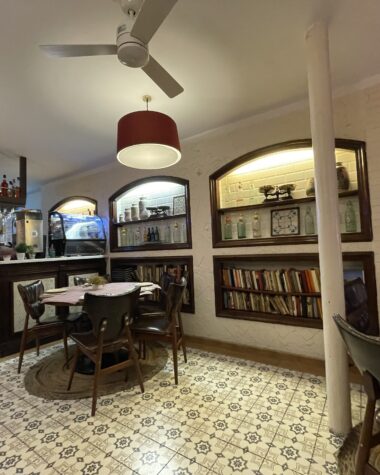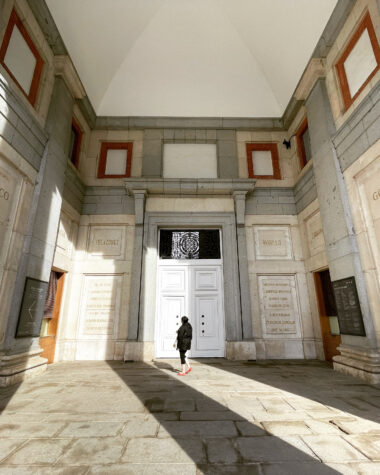Cris needed a break so I went on my own adventure today. I started with a visit to the Barcelona Maritime Museum, dedicated to naval history in Spain from the earliest times to today. It has a pretty rich collection of artifacts, models, and a full-size replica of a 16th century Royal Galley inside.

The Building
The building housing the museum was the site of the original Royal Shipyard in Barcelona, dating back to the middle ages. Parts of the construction date from the 1400-1600’s, and some further renovations were made in the 18-19th century. It’s quite an interesting looking building on its own so I couldn’t help taking a few pictures of it.





The Displays
The building is quite large, and has a great layout with lots of interesting and interactive displays. I love how they employed shipping containers into the design with large type. Some containers would have displays inside them, or cutouts to look into. It’s not a boring layout. The displays included real objects, including original naval maps, objects, documents, paintings, models, and multimedia.
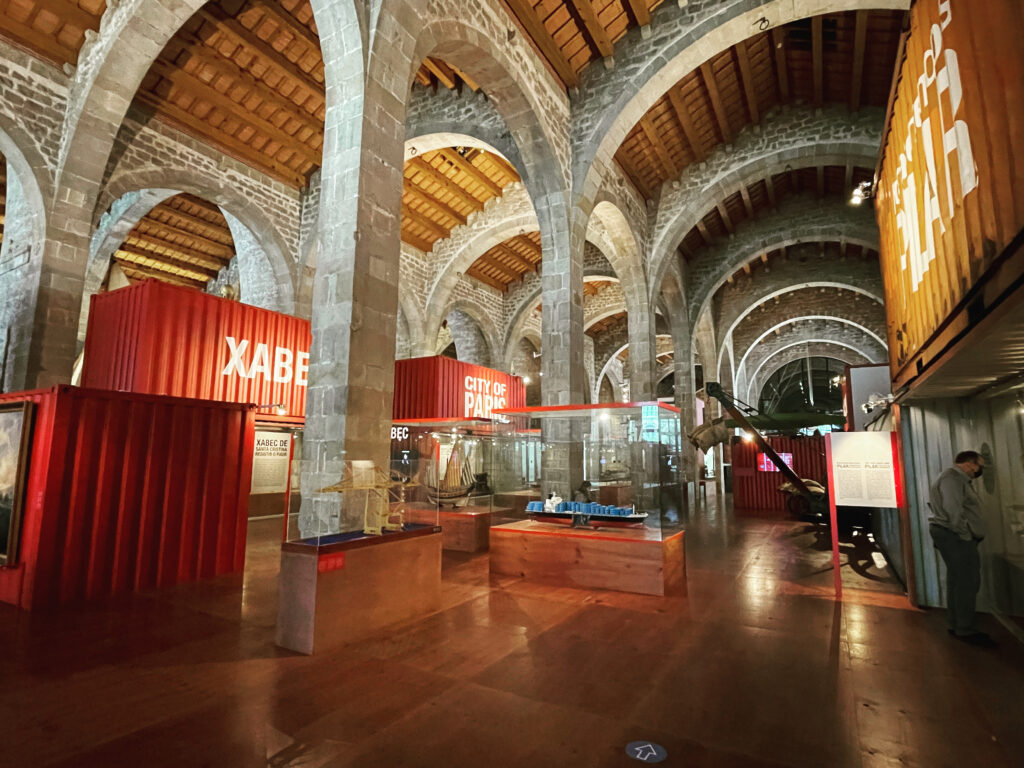



Full-Size Replica of 16th Century Royal Galley
At the heart of the museum is a replica of a 16th century Royal Galley. It’s 60 meters long! A galley was a type of ship driven by rowers – this one had 59 oars powered by 236 rowers.
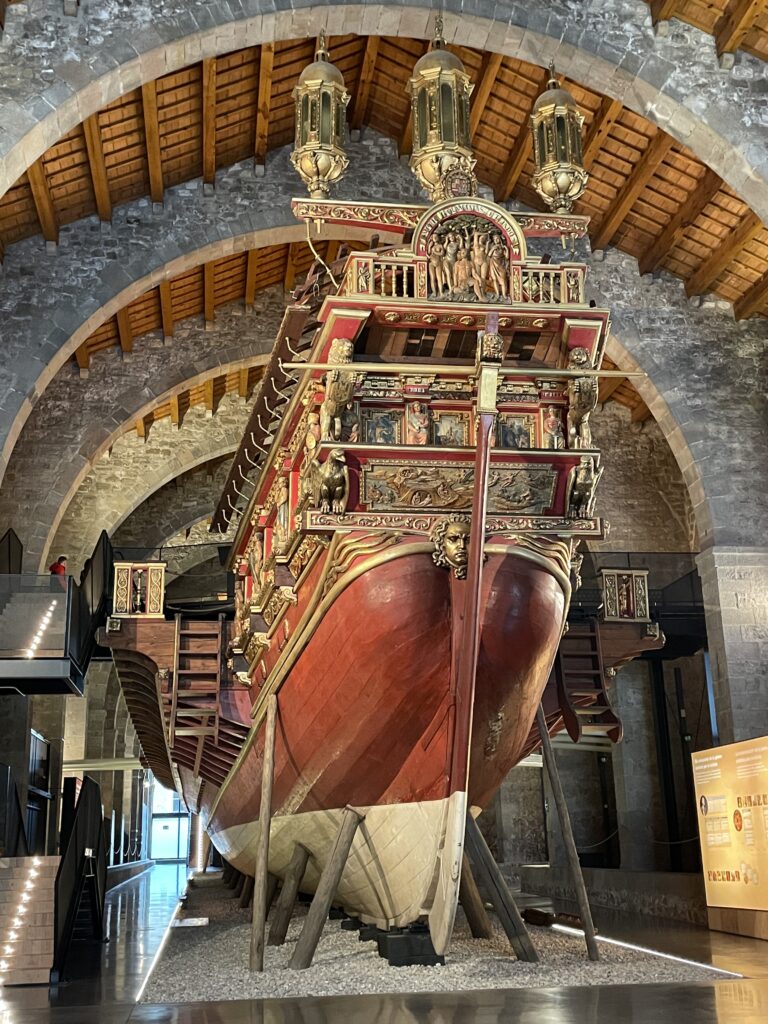
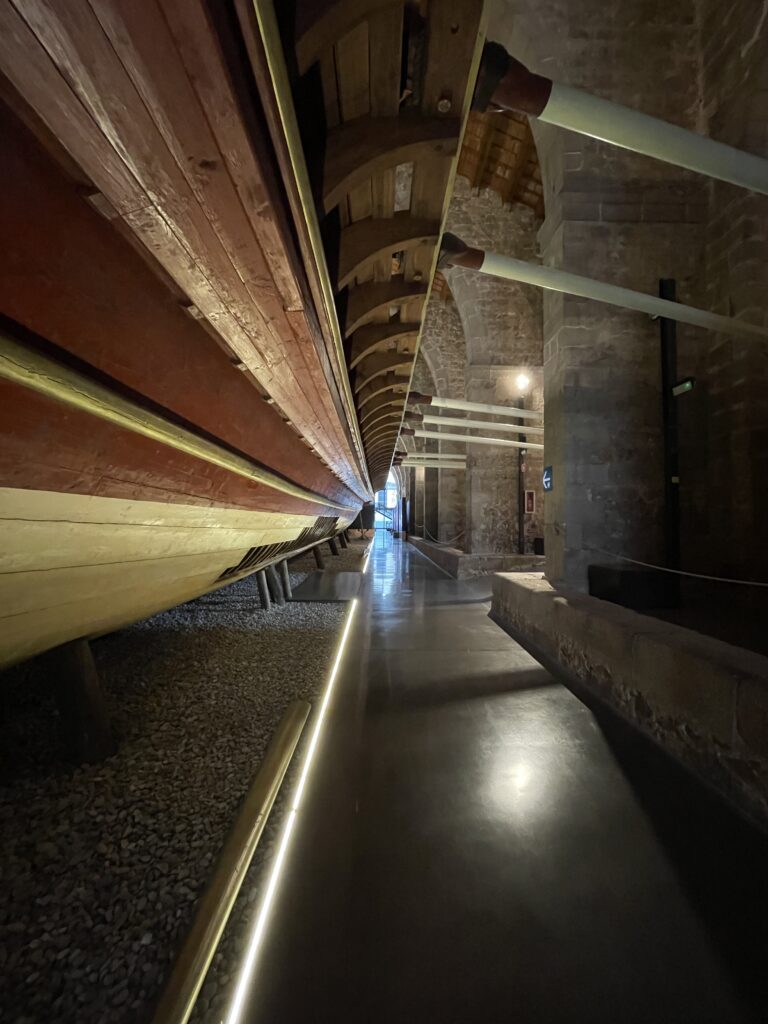
Rowers & Royalty… same ship, different world.
For the people on board, the experience really depended which end you sat on.
The majority of the top deck was dedicated to the rowers. A galley like this has no sails – it’s powered by rowers. 246 of them, which were crammed onto benches side by side, chained to the floor by their ankles with no cover from the elements. The conditions were so bad, the average rower would only last 2 years.
It’s also said that it was impossible for a ship like this to sneak up on another ship. The smell of the ship was so bad, due to the poor hygiene, sickness, and terrible conditions, that another ship could smell this one coming from miles away.
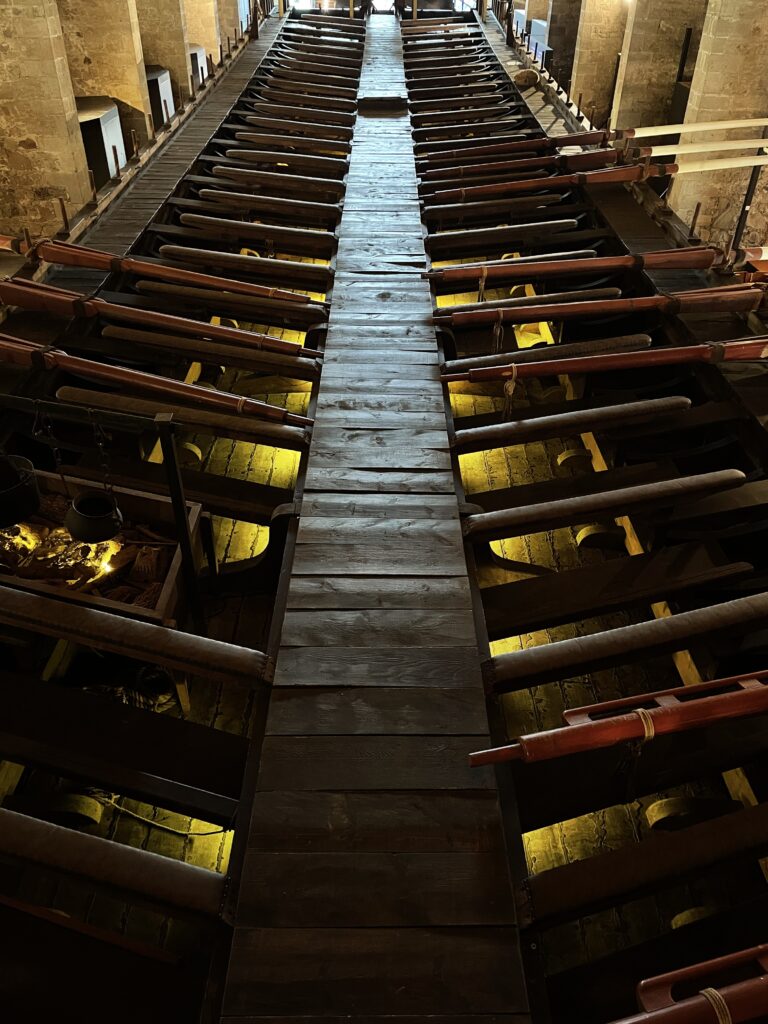
On the back of the ship, is where the captain and commanding crew spent their time. In a the most beautifully ordained cabin made of the finest woods, with a nice roof to protect them from the elements. This was a royal ship, after all. However, this cabin was open to the rowers on the front, and there is no way they could escape the stench of the boat. So I don’t think it was as cozy as the fine woodwork made it out to be.

The museum was a worthy visit. I don’t even have a particular penchant for naval history, and I found it quite accessible and engaging. I’d recommend giving it a try, it’s good for most ages (there were school groups going through it when I was there.) And of course, needless to say, if you’re the type that has watched Master & Commander 40 times over, then this is probably a must-see for you.
